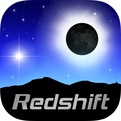Agreement under the Radar
NASA and ESA sign Mars agreement
The agreement, made in Washington DC, gives the green light to scientists and engineers to begin the joint planning of missions to the Red Planet.
 |
The European Mars Rover in testing
The Mars Joint Exploration Initiative (Meji) has been under discussion for several months, with the key elements - covering scope, division of responsibility and financing - gradually falling into place. The letter of intent puts the initiative on a more formal footing. The US and Europe have taken the view that they can achieve more together scientifically at the Red Planet if they combine their expertise.
And with both parties' current Mars programs also experiencing financial pressures, the shared approach means the exploration schedule of a mission every two years can be maintained.
Esa's member states have already committed 850m euros towards a Red Planet venture. They will need to take that figure up to about a billion euros to properly fund Meji activities.
Their broad vision includes future launch opportunities. In 2016 a European-led orbiter to study trace gases, including methane, in Mars' atmosphere. The mission would also put a static meteorological station on the surface. Critically, Europe would handle the entry, descent and landing of this station - a capability it has yet to demonstrate.
In 2018 European and American rovers could be dispatched to Mars. Finally in 2020: a network of landers focused on geophysics and the environment is under consideration.
Source: BBC, NASA, ESA
Agreement under the Radar
NASA and ESA sign Mars agreement
The agreement, made in Washington DC, gives the green light to scientists and engineers to begin the joint planning of missions to the Red Planet.
 |
The European Mars Rover in testing
The Mars Joint Exploration Initiative (Meji) has been under discussion for several months, with the key elements - covering scope, division of responsibility and financing - gradually falling into place. The letter of intent puts the initiative on a more formal footing. The US and Europe have taken the view that they can achieve more together scientifically at the Red Planet if they combine their expertise.
And with both parties' current Mars programs also experiencing financial pressures, the shared approach means the exploration schedule of a mission every two years can be maintained.
Esa's member states have already committed 850m euros towards a Red Planet venture. They will need to take that figure up to about a billion euros to properly fund Meji activities.
Their broad vision includes future launch opportunities. In 2016 a European-led orbiter to study trace gases, including methane, in Mars' atmosphere. The mission would also put a static meteorological station on the surface. Critically, Europe would handle the entry, descent and landing of this station - a capability it has yet to demonstrate.
In 2018 European and American rovers could be dispatched to Mars. Finally in 2020: a network of landers focused on geophysics and the environment is under consideration.
Source: BBC, NASA, ESA






